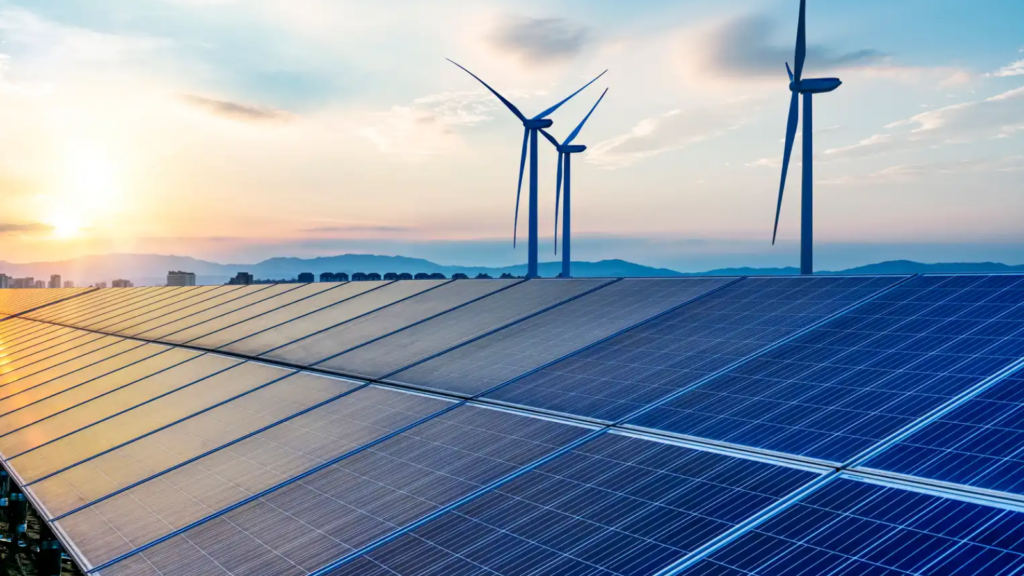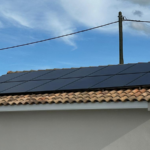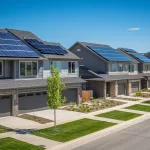Content:
Belgium, France, and Italy Record 2024’s Highest Electricity Prices
EU Battery Regulation is coming
Record 25.7% Efficiency Achieved for Perovskite-Organic Tandem Solar Cell
Obligation to Install Solar Panels on Parking Lots in France: Decree Published
Polysilicon Prices Fall as Stock Levels Rise Amid Weak Demand
Belgium, France, and Italy Record 2024’s Highest Electricity Prices
In the first week of December, electricity prices in most major European markets stayed above €100/MWh, with Belgium, France, and Italy reaching the highest prices of 2024 on December 4. Weekend prices dropped.
AleaSoft Energy Forecasting reports that TTF gas futures hit their highest settlement since October 2023 on December 2.
Market Overview
During the week of December 2, most European markets had weekly averages above €100/MWh. The Nordic Nord Pool and French markets were exceptions, with averages of €45.48/MWh and €95.58/MWh, respectively. Italy’s IPEX market had the highest weekly average at €147.07/MWh. Other markets saw prices range from €104.10/MWh in Spain to €114.12/MWh in Germany. The highest daily prices of the week occurred on December 4, with Italy reaching its highest since October 17, 2023.
Solar PV Generation Trends
Solar PV generation increased in Iberia compared to the previous week, with Portugal leading at +6.4% and Spain at +0.8%, continuing upward trends. In contrast, Italy, France, and Germany saw declines. Italy’s decrease was the smallest at 10%, while Germany saw a 47% drop.
France, Spain, and Portugal set new December daily solar PV generation records:
- France and Spain reached 44 GWh and 87 GWh on December 4 and 5, respectively.
- Portugal peaked at 11 GWh on December 8.
- Italy’s second-highest December output of 42 GWh occurred on December 2.
- Germany reached 66 GWh on December 5, second only to 79 GWh on December 1.

EU Battery Regulation is coming
The EU Battery Regulation introduces new requirements for battery manufacturers, importers, distributors, and service providers. It covers all battery types, including those for electromobility, energy storage, and mobile devices. Key regulations include carbon footprint labeling, mandatory recycled content, and digital product passports, with an expanded duty of care across the supply chain.
CE Conformity
Since August 2024, all batteries must meet EU CE standards. Manufacturers and service providers must ensure compliance by adapting their processes, maintaining quality systems, and updating documentation.
Digital Passport & CO₂ Footprint
Batteries must have a digital passport displaying their CO₂ footprint, accessible via a QR code. This includes raw material extraction, transport, and recycling processes.
Recycled Materials
From 2031, batteries for industrial and vehicle use must contain at least 16% recycled cobalt, and 6% recycled lithium and nickel. These quotas will apply to photovoltaic storage and other stationary batteries.
Responsible Supply Chains
The regulation stresses responsible sourcing of minerals and rare earths, ensuring no negative impact on human rights or the environment. Documenting transparency is a challenge, especially for smaller companies.
Quality & Safety
In addition to sustainability, the regulation requires higher standards for battery quality, safety, and performance, with a focus on electric vehicle and energy storage batteries.
Action Steps
Manufacturers, sellers, and installers of batteries used in solar energy storage must review supply chains, document recycled materials, and prepare for CO₂ footprint reporting by 2026. Installers must comply with new labeling and take-back requirements.

Record 25.7% Efficiency Achieved for Perovskite-Organic Tandem Solar Cell
Researchers from the University of Potsdam (Germany) and the Chinese Academy of Sciences have achieved a world-record efficiency of 25.7% for a tandem solar cell. This cell combines a wide-bandgap perovskite bottom layer with a narrow-bandgap organic top cell.
The team highlighted the benefit of using organic cells for their lower carbon footprint, as they are processed at lower temperatures compared to traditional silicon or CIGS technologies.
They developed a novel organic solar cell that extends absorption into the infrared, and addressed efficiency losses in the perovskite layer by applying a passivation layer that reduces material defects.
The tandem cell includes multiple layers: a perovskite absorber (1.88 eV), an organic absorber (1.27 eV), and a silver electrode. They also used cyclohexane 1,4-diammonium diiodide (CyDAI2) as a passivator to improve performance.
Under standard testing conditions, the cell achieved a certified efficiency of 25.7%, setting a new record for this technology.

Obligation to Install Solar Panels on Parking Lots in France: Decree Published
On November 13, 2024, Decree No. 2024-1023 was published in the Official Journal, applying Article 40 of Law No. 2023-175, which accelerates renewable energy production. The decree mandates the installation of solar panels on parking lots larger than 1,500 m² and outlines the calculation of the area subject to the obligation, as well as exemptions and penalties for non-compliance.
For parking lots over 10,000 m², the deadline for installing solar canopies is July 1, 2026. For those between 1,500 and 10,000 m², the deadline is July 1, 2028. At least 50% of the parking area must be covered by photovoltaic or green canopies, including access aisles. Failure to comply could result in fines of up to €40,000 per year until the site is brought into compliance.
The decree also updates the urban planning authorization regime for ground-mounted solar installations and renewable energy canopies. From December 1, 2024, the following require a prior declaration (outside of ABF zones):
- Ground-mounted solar systems and canopies under 3 kWp, with a height exceeding 1.8 meters.
- Installations with a power output between 3 kWp and 3 MWp, regardless of height.
Exemptions from the photovoltaic canopy obligation apply to parking lots where installation is impossible due to:
- Technical constraints related to soil composition or slope.
- Safety risks (natural, technological, civil, or national security risks) that could be exacerbated by the installation.
- Technical constraints due to the parking lot’s use, making installation incompatible.
Additionally, parking lots used for transporting hazardous goods or classified environmental protection installations, as outlined in a ministerial decree, are exempt from the obligation.

Polysilicon Prices Fall as Stock Levels Rise Amid Weak Demand
According to PV Magazine International, the Global Polysilicon Market (GPM) price benchmark dropped to €20.51/kg (0.046 €/W), down 1.89% from last week. This decline is due to sustained low demand, worsened by trade barriers, and a buildup of global polysilicon inventories, now nearing 10,000 tons.
Recent price reductions have affected long-term contract prices, with some orders dropping by up to 2.84 €/kg. In Southeast Asia, where most polysilicon is used for wafer production, output has slowed due to potential US anti-dumping tariffs on solar products. The largest production plant in the region is operating at just 4 GW, with others functioning at under 2 GW or shut down.
On the supply side, a Chinese polysilicon maker announced plans for a 150,000-ton facility in Angola, which would exceed earlier projects in the Middle East. However, this project may face delays due to financing and technology challenges. In China, polysilicon prices for “China Mono Grade” and “China Mono Premium” have also decreased slightly, to €4.34/kg and €5.18/kg, respectively.
The market is facing an oversupply, with production forecasts falling below demand. Polysilicon stocks could cover more than six months of wafer production. Chinese polysilicon plants are operating at under 50% capacity, and some may lay off workers to adjust to the market downturn.

Since 2008, Maysun Solar has been dedicated to producing high-quality photovoltaic modules. Our range of solar panels, including IBC, HJT, TOPCon panels, and balcony solar stations, are manufactured using advanced technology and offer excellent performance and guaranteed quality. Maysun Solar has successfully established offices and warehouses in many countries and built long-term partnerships with top installers! For the latest quotes on solar panels or any photovoltaic-related inquiries, please contact us. We are committed to serving you, and our products provide reliable assurance.
Reference:
Peterknittl. (2024, December 10). Belgio, Francia e Italia registrano i prezzi dei mercati elettrici più alti del 2024. Pv Magazine Italia. https://www.pv-magazine.it/2024/12/10/belgio-francia-e-italia-registrano-i-prezzi-dei-mercati-elettrici-piu-alti-del-2024/
Maxhall. (2024, December 13). EU Battery Regulation is coming – Energy Storage. Energy Storage. https://www.ess-news.com/2024/12/12/eu-battery-regulation-is-coming/
Bellini, E. (2024, December 6). Researchers claim record-breaking 25.7% efficency for perovskite-organic tandem solar cell. Pv Magazine International. https://www.pv-magazine.com/2024/12/06/scientists-claims-record-breaking-25-7-efficency-for-perovskite-organic-tandem-solar-cell/
Deboutte, G. (2024, November 18). Obligation de solariser les parkings : publication du décret. Pv Magazine France. https://www.pv-magazine.fr/2024/11/18/obligation-de-solariser-les-parkings-publication-du-decret/
Baisse du prix du polysilicium : sur fond de faible demande, les stocks augmentent. (2024, November 20). Pv Magazine France. https://www.pv-magazine.fr/2024/11/20/baisse-du-prix-du-polysilicium-sur-fond-de-faible-demande-les-stocks-augmentent/
You may also like:

Empowering Factories with Solar Energy A Strategic Tool for Controlling Production Electricity Costs
Commercial and industrial solar is becoming a key solution for factories to reduce electricity costs and hedge against price fluctuations. This article systematically analyzes its deployment models, cost advantages, and sustainable value pathways.

How Businesses Can Offset Carbon Taxes with Solar Power
This article analyzes the latest carbon tax policies and photovoltaic deduction strategies, helping European businesses legally reduce taxes, increase profits through solar investment, and achieve a win-win situation for both economy and environment.

Forecast and Response: Seizing the Next Decade’s Growth Dividend in Europe’s Commercial and Industrial Photovoltaics Market
Maysun Solar analyzes the growth trends of commercial and industrial photovoltaics in Europe over the next ten years, from policies and ESG to technological innovation, helping companies seize the initiative in the energy transition.

How to Calculate Solar System ROI and Optimize Long-Term Returns?
Solar power is becoming a key solution for businesses to reduce costs and improve efficiency. Accurately calculating ROI and optimizing long-term returns are essential to maximizing investment value.

Will Agrivoltaics Affect Crop Growth?
Agrivoltaics combines solar energy and agriculture to reduce up to 700 tons of CO₂ per MW, improve water use, and boost crop growth for sustainable farming.

6.5 Billion Loss Hits Photovoltaics: Reshaping or Elimination?
In 2025, the photovoltaic market may see a turnaround as some companies take early action. A €6.5 billion loss is driving businesses to explore new growth areas like energy storage and hydrogen. Which giants will break through? Industry transformation is accelerating!



